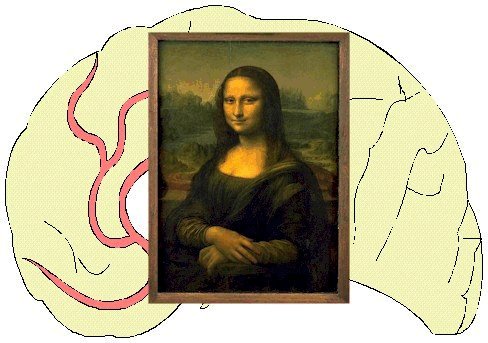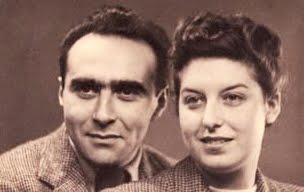
The Common Sense of Science

AFTER THE WAR he did not return to academia, but worked in the early application of what has since become called operations research, initially being seconded to UNESCO to apply statistics to the economics of industry and from 1947 to 1950 he directed analysis of methods of house construction for National Building Studies.
This meant effectively reversing the work he had been involved with during the war: instead of applying statistics to bombing, it was employed in order to advance house reconstruction.
Although he seems to have preferred to refuse administration jobs, in many ways he was more successful in these than in pure science, and he was appointed director of the National Coal Board's Central Research Establishment at Stoke Orchard, near Cheltenham on 22 May 1950 and the family moved into The Square House at Cleve Hill in Cheltenham.
The research establishment was a new one and was designed to carry out research into the underground problems of mining, coal preparation, brickquetting, carbonization, plus mechanical and electrical testing and researching the by-products of coal. Here he presided over the introduction of what was known as 'Bronowski's Bricks' - an early type of smokeless fuel. The round ones tended to roll out of the grate, however, and were made hexagonal. Later, questions were asked in the House of Commons on the amount that had been spent and the process was considered ineffective. The briquettes, manufactured in Warwickshire, went on sale only in the midlands and the north-west. Plans to sell them nationally were abandoned in 1966.
Throughout this period he maintained links with the arts through lectures on poetry and the relationship of both the sciences and the arts as creative experiences. Some of these issues emerged through his book The Commonsense of Science (1951). He was Carnegie visiting professor of History at MIT in 1953 and subsequently produced a series of books and articles for the American press, on which he based his book Science and Human Values. Here, he argued the position of science as a central part of culture and enlarged the view he had held for some time that both science and cultural life were impoverished if they were isolated from each other [Ref. 6].
"For me science is an expression of the human mind, which seeks for unity under the chaos of nature as the writer seeks for it in the variety of human nature."
This point was also explored by C.P. Snow in his more famous lecture where he described there being 'two cultures', but Bronowski was disparaging of Snow's suggestions that this division could be repaired in any simple way, by having, for example, all artists learn the second law of Thermodynamics.
He was not idle in practising this himself, and in 1954 he wrote a libretto for a radio opera, My Brother Died, with composer Peter Racine Fricker [see left-hand margin]. Carlo and Philip Banco are riders in a six-day bicycle race. One of them is killed and the other tries to revenge his brother. Denis Quilley was Philip Banco and Ian Wallace the trainer. 26 April 1954 on the Third programme. It received mixed reviews.
He also wrote a radio play, The Face of Violence, which won the Italia Prize. It was also featured on the stage in a production at the Cheltenham Civic Playhouse by the Falcon players at 7.30 for two nights on 5th and 6th July 1954.
RECOLLECTIONS:
Gwyn Thomas
the Welsh teacher and writer, and
A.J. Ayer
the philosopher,
both recall their time as fellow-panellists on
the Brains Trust.
Bruce Mazlish recalls his collaboration with Bronowski at the time of the publication of Science and Human Values
The Taung Child
Some details of this episode are presented here.
It was at this time that his public skill as an interpreter of science also emerged and he became perhaps the most clearly identifiable scientist in Britain through his television appearances, particularly in The Brains Trust (see left margin) which he appeared on every Sunday until April 1957. He was establishing himself as a public figure in science, and was the model for “Doc” in a News Chronicle strip-cartoon called Colonel Pewter in 1958.
It was also in the early fifties that an event took place which he saw as pivotal to the rest of his life: he was presented with a problem in palaeontology. Raymond Dart had unearthed a fossil skull of a child long before, in 1924, at Taung in Eastern Africa. It had features which suggested it as a possible ancestor to human beings, although this idea could not be substantiated. Nonetheless, the name Australopithicus was used to describe what appeared to be a distinct new species. More examples of the species were found from 1937 onward and by 1950 statistical methods were being used to evaluate the evidence. Bronowski collaborated with W.M. Long and the British palaeontologist William Le Gros Clark to try to establish the likelihood that the Taung child was a candidate for human ancestry [Ref. 7].
"In 1950, when [the Taung child's] humanity was by no means accepted, I was asked to do a piece of mathematics. Could I combine a measure of the size of the Taung child's teeth with their shape, so as to discriminate them from the teeth of apes?"The impact of this for Bronowski was the formative effect it had on his life: his private research programme turned to the study of the unique biology of human beings and the unique intellectual products of that biology - to what he called 'human specificity'.
Enter Chapter 5 Insight

|
Copyright © 1997 by Stephen Moss. All rights reserved.
6. Wakeman, J.,1975, World Authors (New York: H.W. Wilson) p 221 - 223.
7. Bronowski, J., 1973, The Ascent of Man (London: BBC), p.30.